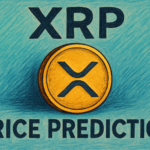
Since the end of January, both Ordinal transactions and fees have significantly reduced on the Bitcoin blockchain.
It wasn’t a real collapse, but a slow return to normality.
However, normality is no longer that of the end of 2023, but in any case the situation is significantly better than that of the end of December.
Ordinals transactions on the Bitcoin blockchain
From the on-chain data it emerges that the maximum daily peak on the Bitcoin blockchain, regarding Ordinals, occurred in November 2023, but the number of daily transactions with Inscriptions remained high until the end of January.
However, suddenly at the beginning of February it dropped significantly, and although it did not return as low as in October 2023, it fell four times.
The daily peaks, however, are not constant, because for example on January 13th the transactions with Inscription were more than 470,000, while on the 21st of the same month they were less than 100,000.
However, if we analyze the weekly trend, this decreased by approximately four times in the first week of February compared to the last weeks of January.
Ordinals and NFTs: Transactions on the Bitcoin blockchain
This sharp reduction also led to a decline in the overall number of transactions validated each day.
On-chain data says that the maximum peak of the last twelve months from this point of view was reached on December 31, 2023, with over 730,000 transactions in one day.
For the Bitcoin blockchain these are decidedly high numbers, given that for example in October they rarely exceeded 300,000 per day.
Although daily peaks exceeded 600,000 three times in January, there were also several days with fewer than 400,000 transactions.
So in December the exaggerated volumes of Ordinal transactions were also added to a high volume of ordinary transactions, generating a boom which, however, had already subsided in January.
In February so far there has not yet been any day with more than 600,000 transactions, and only one with more than 500,000. However, there have already been three days with even less than 300,000 transactions, and this is a figure in line with the October average.
Le fee
This decline has finally also led to a significant reduction in fees.
Analyzing the average daily cost per single transaction we discover that shortly after mid-December it had even skyrocketed to more than $37, a figure considered by many to be exaggerated.
Already at the end of December, on some days the average cost per transaction had dropped to $10, but the greatest drop occurred in January. In fact, at the end of the month it even fell below $4, which is a figure in line with the recent past.
There was a brief peak above $14 again at the beginning of February, but in the following days it fell back below $4.
However, if on the one hand the average cost per transaction is indicative of the trend of increase or reduction in fees, on the other hand it would be better to take the median as a reference for single transactions.
In mid-December the median transaction fee was close to $25, but by early January it had dropped to $3.3. These are numbers absolutely in line with those of the recent past. Even at the end of January the median had dropped to around $1.6, which is an absolutely normal rate, although not low.
$1.6 is also the value of the median daily fee per transaction in recent weeks.
However, it should always be remembered that to move a few BTC, or a few Satoshis, it would be better to use the Lightning Network, and not the classic on-chain transactions, because with LN the fees are enormously lower, so much so that they can even be irrelevant in some cases.
Since in order to use LNB you need to open a channel, and opening the channel requires a single on-chain transaction, it would be better to open it now that on-chain fees are low.
Afterwards it will no longer be necessary to carry out on-chain transactions with that channel until it is closed, and thus many fees will be saved.
The correlation with the price
As can easily be understood from this data, there is no correlation between the cost of Bitcoin fees and the price of BTC.
In fact, the main problem is caused precisely by Ordinals, which are not BTC. They are a sort of NFT on the Bitcoin blockchain which is obtained by exploiting the potential of the so-called Inscriptions, which in turn are not BTC but information recorded on the Bitcoin blockchain.
The Bitcoin blockchain itself was designed neither for the creation nor for the transfer of non-fungible-tokens, so Ordinals are in fact an unoptimized forcing that ends up having an excessive negative impact on the use of Bitcoin.
If instead, for example, they were exchanged on a layer-2 like LN, the problem would be reduced enormously, because as usual on the blockchain there would only be the token creation transaction, but not those of any exchange.
Hopefully, sooner or later those who trade Ordinals will realize how convenient it could be to trade them on a low-cost layer-2, rather than trading them directly on the high-cost blockchain.
Source: https://cryptonomist.ch/2024/02/20/blockchain-bitcoin-ordinals-fee-in-calo/

